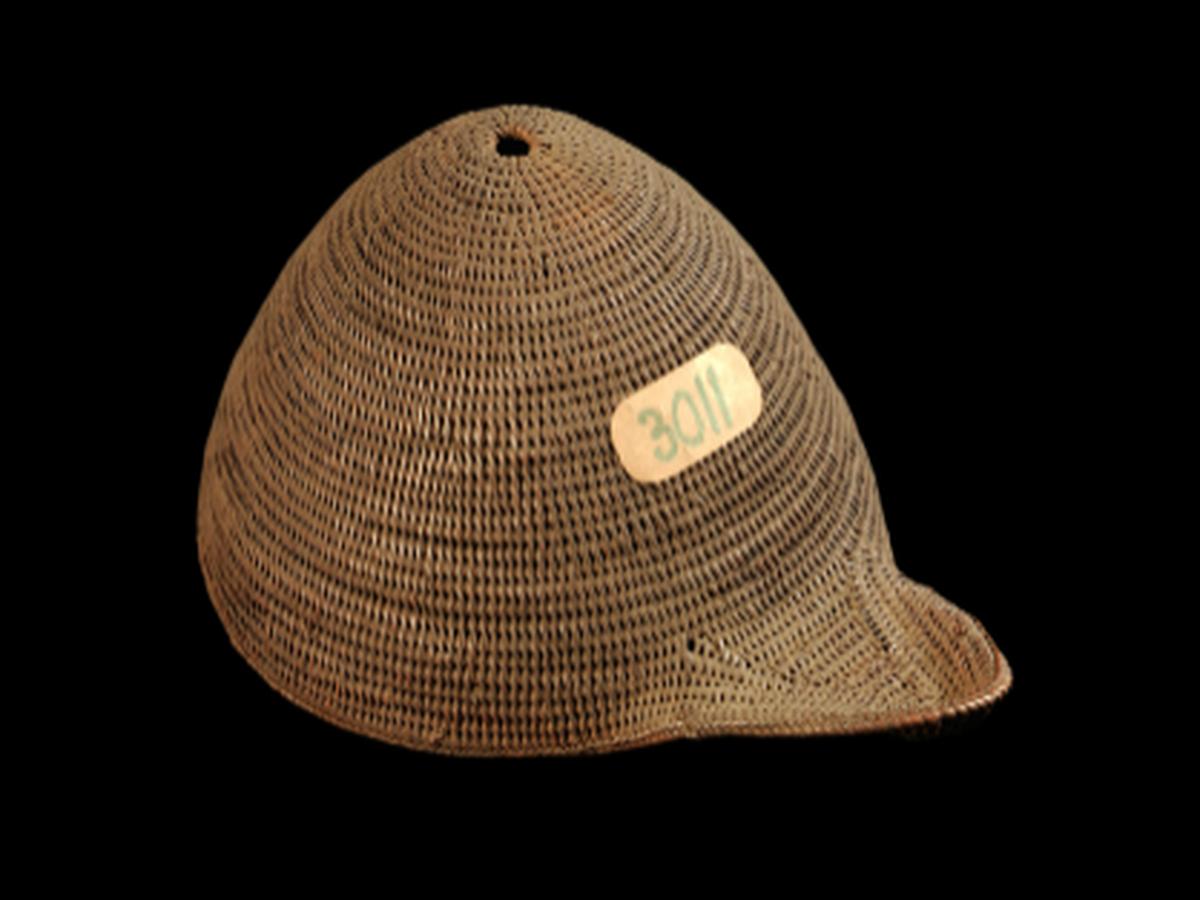State
Tribe Name
Art Type
short description
Mishmi tribe intricate cane hat, Arunachal Pradesh stands for the perfect art and skill among indigenous handiworks. This hat is circular and is made exclusively by tightly and finely woven strips of cane so that it holds strong but allows high free passage of air. This is good in hilly terrain and humid climate of Arunachal. There is an eye-catching structural projection on the brim, while a little hole on top serves to ventilate the hat with air for the wearer's comfort while working in the sun for long hours. This careful technique of weaving is a demonstration of the traditional knowledge of the Mishmi people about natural materials, especially bamboo and cane, readily available in their ecology.
Thumbnail

Filter Postion
Left
Filter Background
Off
Theme
Filter Header Image

content
Image

description
Mishmi tribe intricate cane hat, Arunachal Pradesh stands for the perfect art and skill among indigenous handiworks. This hat is circular and is made exclusively by tightly and finely woven strips of cane so that it holds strong but allows high free passage of air. This is good in hilly terrain and humid climate of Arunachal. There is an eye-catching structural projection on the brim, while a little hole on top serves to ventilate the hat with air for the wearer's comfort while working in the sun for long hours. This careful technique of weaving is a demonstration of the traditional knowledge of the Mishmi people about natural materials, especially bamboo and cane, readily available in their ecology.
Traditionally it would be used for both functional and cultural purposes: protecting the head from the sun and rain while working in fields or trekking in forests, but also worn during festivals and rituals to express an identity as a community. The skill of weaving had been passed down for generations by the Mishmi people, showcasing this tribe's artistic potential and ecological wisdom. This hat is not simply a garment; it symbolically embodies ecological balance and ethnical identity, interwoven tangentially into the everyday as well as the ceremonial.
Traditionally it would be used for both functional and cultural purposes: protecting the head from the sun and rain while working in fields or trekking in forests, but also worn during festivals and rituals to express an identity as a community. The skill of weaving had been passed down for generations by the Mishmi people, showcasing this tribe's artistic potential and ecological wisdom. This hat is not simply a garment; it symbolically embodies ecological balance and ethnical identity, interwoven tangentially into the everyday as well as the ceremonial.
Image Mode
landscape
promoted
On
Verified
Off
